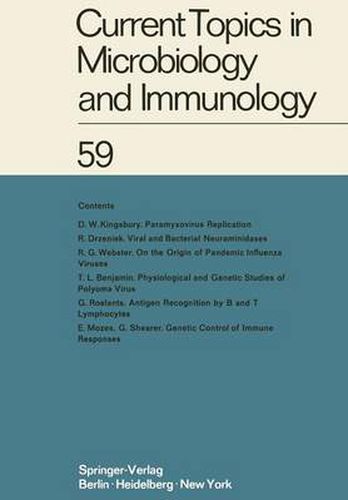Readings Newsletter
Become a Readings Member to make your shopping experience even easier.
Sign in or sign up for free!
You’re not far away from qualifying for FREE standard shipping within Australia
You’ve qualified for FREE standard shipping within Australia
The cart is loading…






This title is printed to order. This book may have been self-published. If so, we cannot guarantee the quality of the content. In the main most books will have gone through the editing process however some may not. We therefore suggest that you be aware of this before ordering this book. If in doubt check either the author or publisher’s details as we are unable to accept any returns unless they are faulty. Please contact us if you have any questions.
Influenza continues to be one of the major epidemic diseases of man and is, in fact, his only remaining pandemic disease (BEVERIDGE, 1969). This is largely because influenza virus undergoes extreme antigenic variation, the mechanism of which is still poorly understood. Two kinds of antigenic variation occur in influenza viruses, antigenic drift and major antigenic shifts; both involve chan ges in the hemagglutinin and neuraminidase antigens on the surface of the virus. Antigenic drift, which involves gradual changes in the surface antigens of influenza virus, is thought to result from the selection by an immune popula tion of mutant virus particles with altered antigenic determinants. These mutants therefore possess a growth advantage in the presence of antibody (FRAN CIS and MAASSAB, 1965; ARCHETTI and HORSFALL, 1950; HAMRE et aI., 1958). It has been shown that antigenic mutants isolated in vitro by selection with antibody have changes in amino acid sequence in the polypeptides of the hem agglutinin subunits (LAVER and WEBSTER, 1968) and it is likely that antigenic drift in the neuraminidase occurs by the same mechanism.
$9.00 standard shipping within Australia
FREE standard shipping within Australia for orders over $100.00
Express & International shipping calculated at checkout
This title is printed to order. This book may have been self-published. If so, we cannot guarantee the quality of the content. In the main most books will have gone through the editing process however some may not. We therefore suggest that you be aware of this before ordering this book. If in doubt check either the author or publisher’s details as we are unable to accept any returns unless they are faulty. Please contact us if you have any questions.
Influenza continues to be one of the major epidemic diseases of man and is, in fact, his only remaining pandemic disease (BEVERIDGE, 1969). This is largely because influenza virus undergoes extreme antigenic variation, the mechanism of which is still poorly understood. Two kinds of antigenic variation occur in influenza viruses, antigenic drift and major antigenic shifts; both involve chan ges in the hemagglutinin and neuraminidase antigens on the surface of the virus. Antigenic drift, which involves gradual changes in the surface antigens of influenza virus, is thought to result from the selection by an immune popula tion of mutant virus particles with altered antigenic determinants. These mutants therefore possess a growth advantage in the presence of antibody (FRAN CIS and MAASSAB, 1965; ARCHETTI and HORSFALL, 1950; HAMRE et aI., 1958). It has been shown that antigenic mutants isolated in vitro by selection with antibody have changes in amino acid sequence in the polypeptides of the hem agglutinin subunits (LAVER and WEBSTER, 1968) and it is likely that antigenic drift in the neuraminidase occurs by the same mechanism.